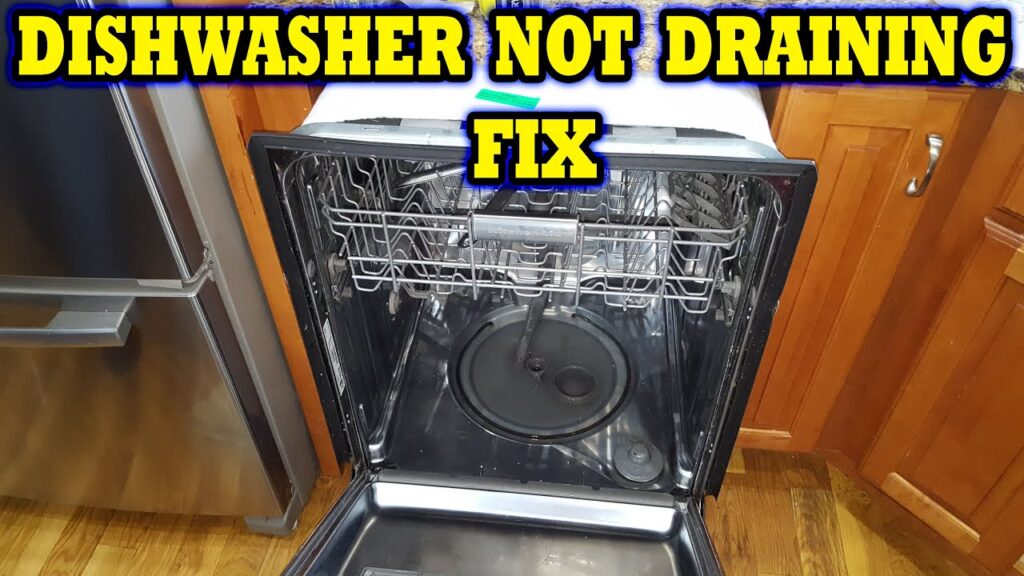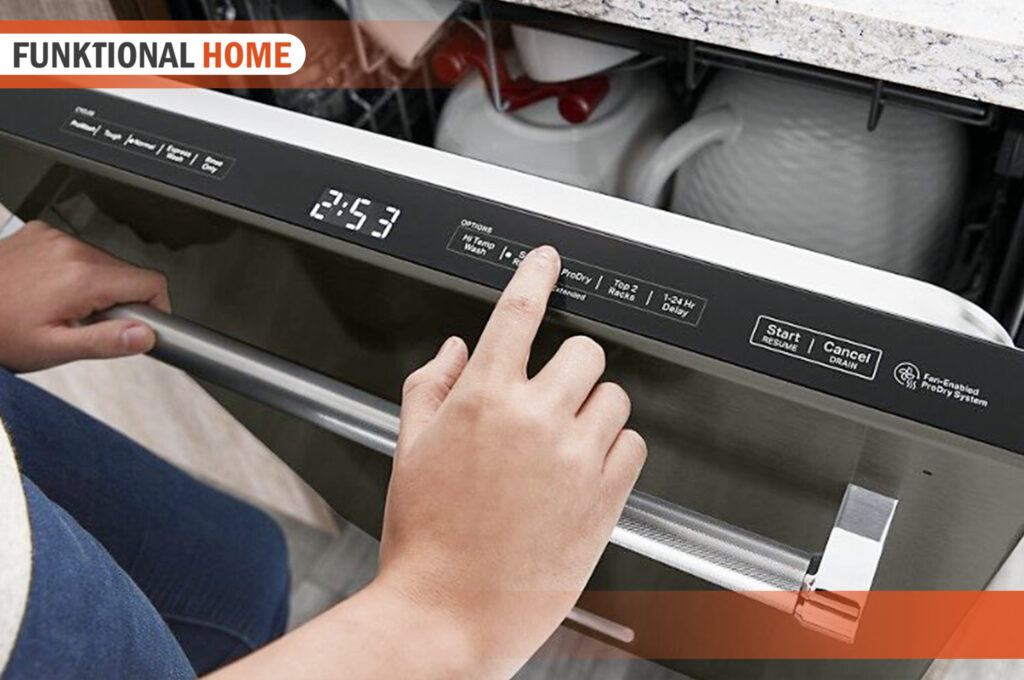Experiencing a Kitchenaid dishwasher won’t drain? Discover effective troubleshooting steps and expert solutions to fix the issue. Learn how to identify common causes like a clogged drain hose or blocked drain pump, and clear them to restore proper drainage. Get your KitchenAid dishwasher working flawlessly again with our comprehensive guide.
Table of Contents
ToggleIntroduction
Having a dishwasher that won’t drain can be frustrating and inconvenient. If you’re facing this issue with your KitchenAid dishwasher, don’t worry. This article will guide you through the troubleshooting process to identify the potential causes and provide effective solutions to get your dishwasher draining properly again. We’ll cover everything from simple fixes to more complex issues, ensuring you have a clear understanding of how to resolve the problem.
Common Reasons for a Dishwasher Not Draining
There are several potential causes for a KitchenAid dishwasher failing to drain properly. Understanding these common issues will help you troubleshoot the problem more effectively.
1. Clogged Drain Hose
A clogged drain hose is one of the most frequent culprits when it comes to dishwasher drainage problems. Over time, food particles, grease, and debris can accumulate in the hose, obstructing the flow of water.
2. Blocked Drain Pump
The drain pump is responsible for removing water from the dishwasher. If it becomes clogged or damaged, the dishwasher won’t drain properly. This can happen due to foreign objects, such as broken glass or utensils, getting stuck in the pump.
3. Malfunctioning Drain Valve
The drain valve regulates the flow of water out of the dishwasher. If it fails to open or close correctly, it can prevent proper drainage. A malfunctioning drain valve may be due to a faulty solenoid or a mechanical issue.
4. Clogged Air Gap
The air gap is a crucial component that prevents wastewater from flowing back into the dishwasher. If the air gap becomes clogged, it can hinder proper drainage. Debris and mineral deposits are common causes of air gap blockages.
5. Faulty Drain Solenoid
The drain solenoid is responsible for controlling the drain valve’s opening and closing. If the solenoid is defective, it can disrupt the drainage process and result in standing water in the dishwasher.
Steps to Troubleshoot a KitchenAid Dishwasher Won’t Drain
Now that we’ve identified the common reasons behind a dishwasher not draining, let’s walk through the troubleshooting steps to help you fix the problem.
1. Check for Blockages in the Drain Hose
Start by inspecting the drain hose connected to your KitchenAid dishwasher. Disconnect it from the sink drain or garbage disposal and check for any obstructions. If you find debris or clogs, remove them carefully using a pipe cleaner or a similar tool.
2. Inspect and Clean the Drain Pump
Locate the drain pump in your dishwasher. It is usually situated at the bottom of the appliance. Remove any debris, foreign objects, or residue that may be blocking the pump. Ensure that the impeller, a small rotating component within the pump, moves freely.
3. Examine the Drain Valve
Inspect the drain valve for any signs of damage or blockage. Clean the valve carefully and ensure it opens and closes correctly. If the drain valve appears to be malfunctioning, it may require replacement.
4. Clear a Clogged Air Gap
Check the air gap, which is typically located near the sink faucet. Unscrew the cap and clean out any debris or deposits that may be causing the clog. Once clean, reattach the cap securely.
5. Test the Drain Solenoid
If all previous steps haven’t resolved the issue, it’s time to check the drain solenoid. You will need a multimeter to test its functionality accurately. If the solenoid is defective, it will need to be replaced by a professional.
Additional Tips to Ensure Proper Dishwasher Drainage
Preventing future drainage issues is crucial for maintaining your KitchenAid dishwasher’s optimal performance. Here are some additional tips to help you ensure proper dishwasher drainage in the long run:
- Regular Maintenance: Clean the dishwasher’s filter, spray arms, and interior regularly to prevent debris buildup.
- Proper Loading of Dishes: Avoid overloading the dishwasher, as this can obstruct the spray arms and affect drainage.
- Using the Correct Detergent: Use dishwasher detergent specifically designed for automatic dishwashers, as using regular dish soap can lead to excessive suds and drainage problems.
Conclusion
A KitchenAid dishwasher that won’t drain can be a frustrating problem, but with the right troubleshooting steps, you can identify and resolve the issue. By checking the drain hose, pump, valve, air gap, and solenoid, you can tackle common causes of drainage problems. Additionally, maintaining your dishwasher properly and following best practices will help prevent future issues and ensure efficient drainage.
FAQs
1. Why is my KitchenAid dishwasher not draining? There are several potential reasons for a KitchenAid dishwasher not draining, including a clogged drain hose, blocked drain pump, malfunctioning drain valve, clogged air gap, or faulty drain solenoid.
2. Can a clogged drain hose cause the dishwasher not to drain? Yes, a clogged drain hose is a common cause of dishwasher drainage problems. Food particles, grease, and debris can accumulate in the hose, obstructing the water flow.
3. How often should I clean the dishwasher drain pump? It’s a good practice to clean the dishwasher drain pump every few months to prevent clogs and ensure optimal performance. However, the frequency may vary depending on your usage and the amount of debris in your water supply.
4. What is the purpose of the air gap in a dishwasher? The air gap is designed to prevent wastewater from flowing back into the dishwasher. It provides an air break between the dishwasher and the sink drain, ensuring proper drainage and preventing contamination.
5. Should I hire a professional for dishwasher drain issues? If you’ve followed the troubleshooting steps outlined in this article and your dishwasher still won’t drain, it’s advisable to seek professional assistance. A qualified technician can diagnose and fix more complex issues that may require specialized knowledge or replacement parts.
6. If I have any further questions or need assistance, how can I contact you? If you have any questions or need assistance, please feel free to reach out to our knowledgeable team. You can contact us through the provided contact form on our website. We are here to help!





